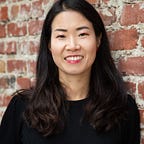You can always develop your passion in the Placeholder phase.
What comes to your mind when you think of Julia Child? Yeah, she is the iconic figure who introduced the French cooking to the American public in 1961 with the famous cookbook, <Mastering the Art of French Cooking>. But did you know that before she became an iconic culinary figure, she was an intelligent officer at the OSS (Office of Strategic Service — the precursor of the modern CIA) during the World War II? And more surprise — she wasn’t even interested in cooking nor food until she went to Paris when she was 36!
Graduating from college, Julia Child wanted to be a writer. But she didn’t know where to start so instead she started as a copywriter for marketing at a luxury furniture brand. When the World War II started, she wanted to serve in the war, so she applied for the Women’s Army Corps. However, she got rejected because she was too tall (the limit was 6 ft but she was 6 ft 3). Luckily, she found an opportunity to join the OSS (Office of Strategic Services — the precursor of modern CIA). So Julia worked as an information officer on top secret operations around the world, such as China, Ceylon (now Sri Lanka), and Europe.
After the war was over, the OSS was disbanded and her assignment was over as well. Most of her peers who worked in the OSS continued to work for the US Foreign Services but she decided to leave the foreign service career. She wanted something different. She didn’t know yet what it was, but she was looking for different ways to fulfill her creative and intellectual interests. She was entering the Placeholder phase.
In 1948, her husband Paul got an assignment to Paris. In France, Julia spent the year acclimating to life as a married woman and continuing to explore various interests, such as writing and other hobbies. Nothing seemed meaningful to pursue but the French food started growing on her. Her husband, Paul, was someone who knew how to appreciate fine cuisine always, so Julia got naturally interested in the French cuisine.
Then one day in 1948, one meal truly sparked her interest in French cuisine. She had lunch at La Couronne restaurant in Rouen. The dish that stood out to her was Sole Meunière, a simple yet exquisitely prepared dish of sole cooked in butter and lemon. This meal was a revelation to Julia. It was not just the quality of the food but the entire experience — the care in preparation and the art of dining that captivated her.
This experience was a stark contrast with the culinary culture she grew up with in the US at the time. Although Julia Child grew up in a wealthy family in the US, the culinary culture she experienced was very limited. In the US in the early 20th century, meals weren’t savored much. Dining was considered just a necessity for survival, not a rich experience. Because of this, she found the rich culinary culture in French cuisine so intellectually and creatively interesting. Although she was never seriously interested in cooking and wasn’t experienced in it at all before coming to Paris, she was willing to try out more experiments with this intuition in French cooking.
She went deep dive with multiple experiments.
- Learning: She started learning French cooking and joined Le Cordon Bleu in 1951.
- Joining a Community: She joined a local cooking club to meet like-minded women and met two French women who became her lifelong friends and collaborator for multiple projects.
- Many Projects: She started teaching French cooking to American women in Paris with her collaborators, which eventually led them to write the cookbook for American public. They tried publishing <Mastering the Art of French Cooking> in 1956, but it was rejected. After multiple revisions, it was finally published in 1961.
When the cookbook was published in the US, a local public TV station in Boston, WGBH, invited Julia Child as a guest to talk about her cookbook and do a cooking demonstration. It received positive feedback and prompted executives to produce a pilot show. And the rest — 37 years of hosting one of the most successful cooking show — is history.
In Julia Child’s story, we tend to focus on her success as a cookbook writer and a cooking show host since 1961. It was truly her Noble Work to celebrate, but it wasn’t possible without 13 years of various experiments during the Placeholder phase.
It’s also worth noting that she “developed” her passion in cooking rather than “discovered” her passion in cooking. She was never serious about cooking nor food until she went to live in France. But the lack of interest or experience didn’t stop her from being curious about the French cuisine, because she was open to any experiences intellectually and creatively interesting to her.
In her cooking show, she used to say:
“The only real stumbling block is fear of failure. In cooking you’ve got to have a what-the-hell attitude.”
The same principle applies to the Placeholder phase, when you try to figure out what to do. Please stop torturing yourself to find what your passion is first. Instead, just do something that interests you now, however small they are. Stay open and curious to what you learn, however surprising that might be. And just keep experimenting with “what-the-hell” attitude like Julia.
=======================================
Curious about a Placeholder phase? Read this post.
